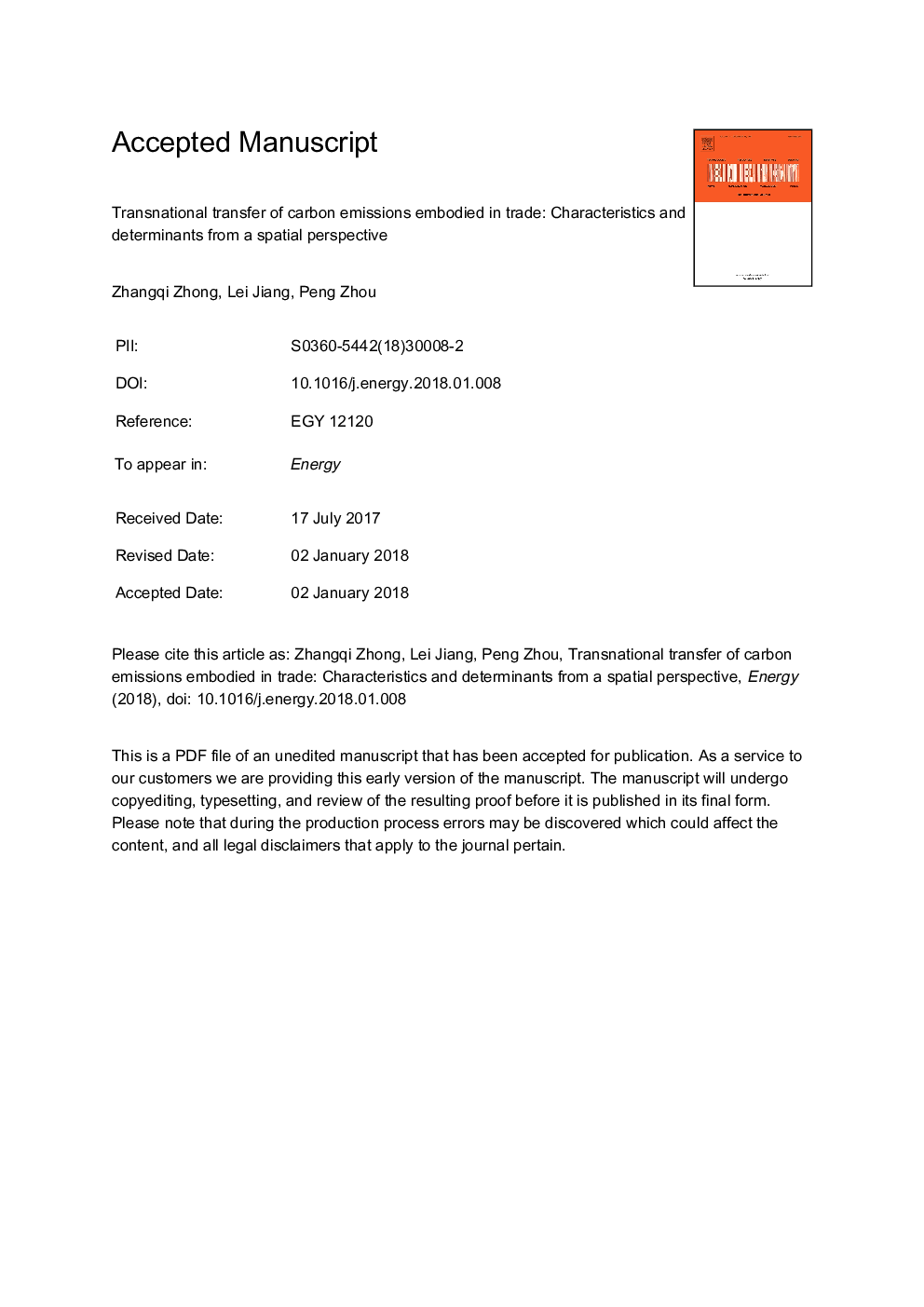| Article ID | Journal | Published Year | Pages | File Type |
|---|---|---|---|---|
| 8072226 | Energy | 2018 | 42 Pages |
Abstract
Based on the multi-regional input-output analytical framework and spatial econometric regression models, this paper analyzes embodied global emissions in trade, so as to unravel the characteristics of spatial emissions transfer for 39 countries from 1995 to 2011, and investigates the determinants of transnational transfer of the global emissions in trade changes from a spatial perspective. One important finding from this study is that the global emissions in trade primarily have flown from developing to developed countries and regions. Notably, however, for those countries endowed with rich natural resources and developed economy like Canada, they have become the net carbon exporters in trade. Another important finding is that such important determinants as energy and industrial structure have spatial spillover effects on the emissions embodied in trade changes. Regarding climate policies, our results suggest that the increase in the share of clean energy could curtail the impact of trade on global carbon emissions. Notably, our study also finds that improving energy efficiency would not lower the emissions embodied in global trade because the forecasted reduction in energy use and thus carbon emissions that may be lost due to the sum of consumer and market responses.
Keywords
Related Topics
Physical Sciences and Engineering
Energy
Energy (General)
Authors
Zhangqi Zhong, Lei Jiang, Peng Zhou,
